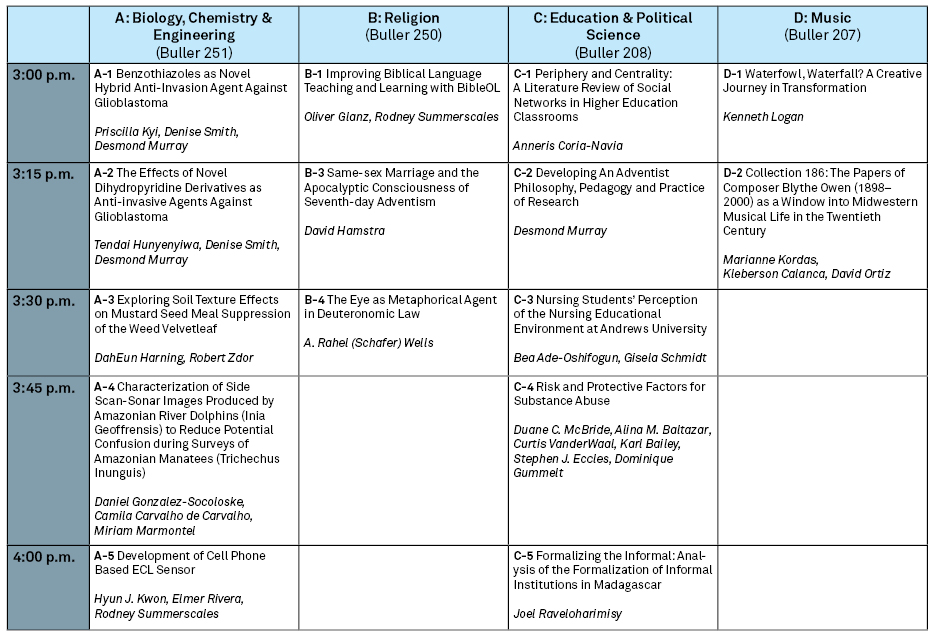C-4 Risk and Protective Factors for Substance Abuse
Presenter Status
Professor, Behavioral Sciences Department
Second Presenter Status
Associate Professor, Social Work Department
Third Presenter Status
Professor, Social Work Department
Fourth Presenter Status
Professor, Behavioral Sciences Department
Fifth Presenter Status
Graduate Student, CIDP Program, Behavioral Sciences Department
Sixth Presenter Status
Director for University Wellness
Preferred Session
Oral Session
Start Date
26-10-2018 3:45 PM
End Date
26-10-2018 4:00 PM
Presentation Abstract
The Andrews University Health Risk Behavior Survey has been conducted about every five years since the 1990’s. The Institute for the Prevention of Addictions, with funding from the General Conference of Seventh-day Adventists, has conducted this survey. The research project has focused primarily on substance use and abuse. In more recent years, the focus on health risk behaviors has added sexual behavior risks, and screen time and other behavioral risks. These were generally the dependent variables in the study. The independent variables have been such protective relationships as religion, family, mental health and general wellness behaviors. Analysis of these data has focused on trends in substance use, cultural leveling in use patterns, and the relationship of substance use to other health and health risk behaviors, as well as significant risk and protective relationships. Overall, the data show that alcohol use has declined among Andrews’s students while marijuana use has increased. Both of these findings are consistent with national use trends among college students. Analysis has also found that religion, acceptance of the health message, and belief internalization are the most protective variables. Relationship with parents and community service is also protective. Major risk variables include trauma and mental health problems. There were significant interrelationships between many types of risk behaviors. In terms of healthy behaviors we are a sometimes campus. We will also focus on the future of this research project, how we are planning for the future in methods, conceptual frameworks, the increasing importance of data management, multi-year integration, and utilization of the data for further research and programs.
C-4 Risk and Protective Factors for Substance Abuse
The Andrews University Health Risk Behavior Survey has been conducted about every five years since the 1990’s. The Institute for the Prevention of Addictions, with funding from the General Conference of Seventh-day Adventists, has conducted this survey. The research project has focused primarily on substance use and abuse. In more recent years, the focus on health risk behaviors has added sexual behavior risks, and screen time and other behavioral risks. These were generally the dependent variables in the study. The independent variables have been such protective relationships as religion, family, mental health and general wellness behaviors. Analysis of these data has focused on trends in substance use, cultural leveling in use patterns, and the relationship of substance use to other health and health risk behaviors, as well as significant risk and protective relationships. Overall, the data show that alcohol use has declined among Andrews’s students while marijuana use has increased. Both of these findings are consistent with national use trends among college students. Analysis has also found that religion, acceptance of the health message, and belief internalization are the most protective variables. Relationship with parents and community service is also protective. Major risk variables include trauma and mental health problems. There were significant interrelationships between many types of risk behaviors. In terms of healthy behaviors we are a sometimes campus. We will also focus on the future of this research project, how we are planning for the future in methods, conceptual frameworks, the increasing importance of data management, multi-year integration, and utilization of the data for further research and programs.




Acknowledgments
The study is supported by the General Conference of Seventh-day Adventists